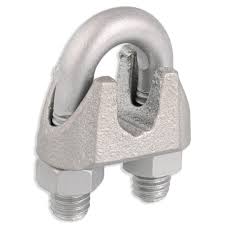News
Nov . 15, 2024 03:46 Back to list
rope fittings
The Importance of Rope Fittings in Marine Applications
Rope fittings play a crucial role in various industries, particularly in marine applications where they provide essential support for lifting, hauling, and securing loads. These fittings, which include items like shackles, thimbles, and turnbuckles, are designed to enhance the functionality of ropes and ensure safe operations. Understanding the importance of rope fittings not only improves operational efficiency but also significantly reduces the risks associated with marine activities.
Types of Rope Fittings
Rope fittings come in various types, each serving a specific purpose. The most common types include
1. Shackles Often used to connect two components together, shackles can handle heavy loads and are available in different materials and designs. Bow shackles are common for lifting applications, while pin shackles are often used in securing applications.
2. Thimbles Used to support the end of a rope or to create a loop, thimbles prevent fraying and wear. They are typically made of steel or plastic and are crucial in applications where the rope will undergo significant tension.
3. Turnbuckles These devices are essential for adjusting the tension in ropes and cables. They consist of a metallic frame with two threaded ends, allowing the user to tighten or loosen the rope as necessary. Turnbuckles are crucial in rigging and securing operations on boats and ships.
4. Hooks Rope hooks can secure lines and loads with ease. They come in various shapes and sizes and are often integrated into more extensive systems for lifting or towing.
5. Clamps and Stops These fittings are used to secure the rope, preventing slippage. They are particularly crucial in applications where the integrity of the line must be maintained under pressure.
Application in Marine Environments
In marine environments, rope fittings are utilized extensively due to the challenging conditions presented by water and weather. Marine vessels rely on these fittings for
rope fittings

- Lifting Cargo When loading and unloading goods, proper fittings are required to safely lift heavy items without risking drops
.- Securing Loads Rope fittings ensure that timely and reliable connections are maintained, preventing cargo from shifting during transit.
- Rigging Sailboats and yachts depend on rigging systems that incorporate various rope fittings to adjust sail tension and maintain stability.
- Mooring Boats must be fastened securely at a dock or anchorage. High-quality fittings are essential for creating reliable mooring lines that can withstand marine forces.
The marine environment is inherently harsh, with factors such as saltwater corrosion, temperature fluctuations, and constant movement putting stress on materials. Therefore, selecting the appropriate fittings made from corrosion-resistant materials like stainless steel or galvanized steel is pivotal for longevity and safety.
Safety Considerations
When utilizing rope fittings, safety should be a top priority. Regular inspection and maintenance of fittings can help ensure that they are in good condition and capable of handling the loads they will endure. It is also essential to use the right fittings for specific applications, as mismatched components can lead to failures and accidents.
Furthermore, operators should be trained in proper rigging techniques. Using fittings incorrectly, such as overloading shackles or improperly securing knots, can result in catastrophic failures.
Conclusion
Rope fittings are integral to the functionality and safety of marine operations. By understanding the various types of fittings and their applications, operators can ensure the secure and efficient handling of loads. As industries continue to develop and evolve, the role of high-quality, reliable rope fittings will remain essential, highlighting the need for ongoing education and adherence to safety standards. Whether it’s securing a vessel at dock or hoisting equipment aboard a ship, the importance of these fittings cannot be overstated. Ensuring the right fittings are in place can make all the difference in the pursuit of safe maritime activities.
